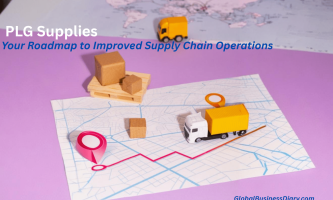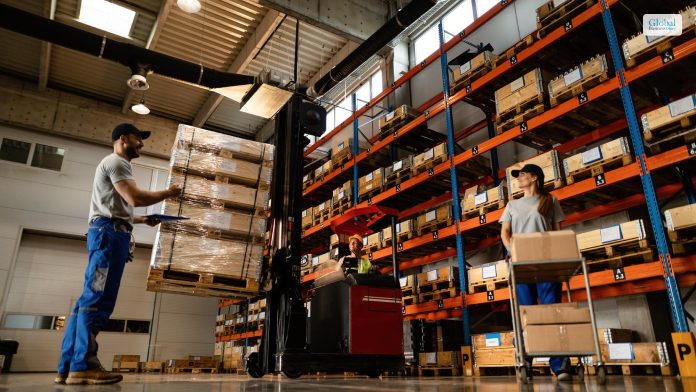How To Become A Strategy Consultant? Roles & Responsibilities

Most people aspire to become a strategy consultant. Are you the one who also has the same aspirations in your mind? If yes, you must be well aware of the roles and responsibilities of a strategy consultant.
Strategy consultant jobs are quite difficult to handle if you are a fresher in this field. You need to make the right decisions in your strategy consulting career. Let’s Discuss a few decisions that can make your consulting dream a complete reality.
You must make the right choices if you want to develop your dreams into a complete reality. Try out the perfect solution that can make things easier and perfect for your business. Develop the perfect awareness about these job roles in detail.
Roles & Responsibilities Of Strategy Consultant

There are several roles and responsibilities of strategy consultants you must know at your end. You must identify the details of it to make things work perfectly well for you in all possible manner.
1. Assessment & Analysis
- Conduct in-depth analyses of the client’s business, industry, and competitive landscape.
- Identify strengths, weaknesses, opportunities, and threats (SWOT analysis).
- Assess market trends and emerging opportunities.
2. Strategy Development
- Work with the client to define their strategic objectives and long-term goals.
- Develop strategic plans and recommendations to achieve those goals.
- Help prioritize and allocate resources to support the strategy.
3. Market Research
- Collect and analyze market data to inform strategic decisions.
- Understand customer needs and preferences.
- Evaluate market potential and growth opportunities.
4. Competitive Analysis
- Analyze the competitive landscape to identify key competitors and their strategies.
- Develop strategies to gain a competitive advantage.
- It is an essential part of Network marketing.
5. Financial Analysis
- Assess the financial health of the client’s organization.
- Develop financial models to support strategic decisions.
- Evaluate the financial implications of various strategic options.
6. Implementation Of Plans
- Assist in the development of an implementation plan, including timelines and milestones.
- Identify potential obstacles and risks to successful execution.
- Application of correct marketing mix can be of great help to you.
Read More: Market Orientation – What Is It, And How Does It Work?
How To Become A Strategy Consultant?

There are several ways you can become a strategy consultant. You must get through the complete details to have a clear idea of it. Some of the essential facts that you need to take care of here are as follows:-
1. Understand The Consulting Landscape
You must get detailed knowledge about the consulting landscape. Your knowledge will help you to understand the ins and outs of the industry. It can provide the services on the basis of that thing. Develop a complete knowledge about the career of strategic management.
The consulting career will help you to develop knowledge about HR, Finance, Marketing, IT, operations, and Finance. You must get through the complete details of it to make things easier and perfect for your career.
The 3E’s are responsible for a better career in strategic consulting jobs like education, experience, and expertise. Marketing Campaigns can be of great help to you.
2. Earn Basic Education
Most of the consultants earn a minimum bachelor’s degree. If you are enrolled in college already, then you must acquire knowledge of business management. It will help you to reach your career goals with complete ease. Once you have the degree in management things are going to be easier for you.
Beyond basic education, skills, knowledge, and experience, a management degree in a consultant career matters a lot. You cannot skip them to become successful in your career. If you want to become successful in your career in strategy management, then things are going to be easier for you.
3. Get Certification
If you do not have the relevant understanding and knowledge of the business, you must go through the strategic management business role to get the certification done in perfect order. The practical primer is for the industry.
You can develop a global outlook and can develop certain skill sets that can assist you in gaining strategic management degrees. There are some institutes from where you can gain certificates for your strategic management career.
- The Strategy Management Institute TSI.
- International Institute For Business Analysis.
- Others and Project Management Institute.
You need to get through the complete details of these career paths to have a better understanding of them. It will help you to shape your career in the right direction.
4. Undergo An Internship
You must undergo a process of work experience to handle the workload in the real field. The internship as a strategy consultant will offer you exposure to the same. Try to identify your mistakes at the time of internship so that you know the reality better.
The more seriously you complete the process of your internships, the better you can understand your job role in perfect order. You must avoid making things too complex for your counterpart.
5. Find A Job
After your internship is over, it is time to explore the job opportunities available in this field. You will get to know the market scenario, and you have to act according to the present market conditions.
Once your job is done, then you can look for a better opportunity in the future. You need to get through the complete process that can assist you in gaining the maximum momentum for your business in the long run.
How Many Strategy Consultants Jobs Are Available Now?

The strategy consultant job growth rate in the upcoming years 2022 to 2030 will be 11.65%. It can rise further as the year progresses. You must know the statistics to have a better insight into this matter. Try to follow the right process that can make things easier for you in all possible manner.
Strategy Consultant Salary
The salary of the strategy consultant ranges between $80,185 to $230,630. You need to know and understand the reality if you want to attain your goals with complete ease. Some of the core factors are already discussed in this article.
Read More: Market Cannibalization – Definition, How Does It Work, Example, And More
Final Take Away
Hence, if you want to develop a strategy consultant job, then the mentioned ways can be of great help to you. You need to understand the market and its market demand. It will assist you in attaining your requirements with ease.
You can share your opinion and views on this matter. It will help us to know your feedback on this matter. Any article becomes incomplete unless it gets reviews from others.
Read Also:













